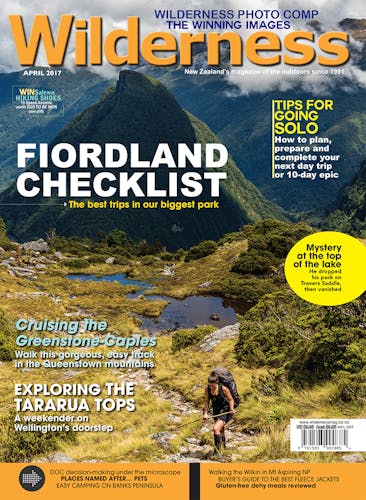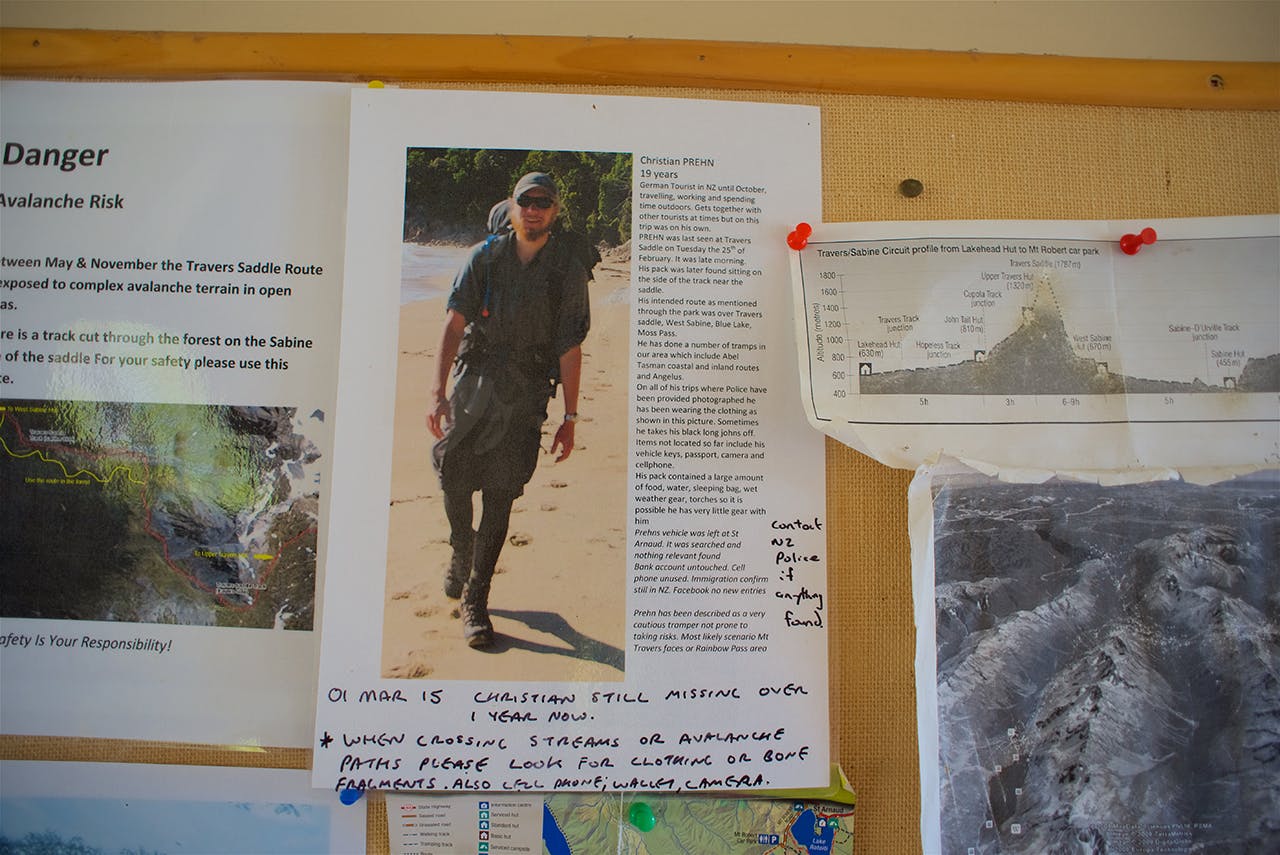Everything was ‘just perfect’ for Christian Prehn as he hiked through Nelson Lakes National Park. But then something happened near Travers Saddle and no one knows what became of him.
Just an hour and a half from Nelson, the Travers-Sabine is a beautiful, busy track. In the 2013-2014 season, about 5000 people walked it, passing from the beech-lined forest on the edge of Lake Rotoiti and up the avalanche-torn Travers Valley. Five thousand people makes for a lot of footprints. That’s why it’s so hard to figure out how German teenager Christian Prehn disappeared that summer.
Prehn, 19, was on the trip of his life. He’d finished school in his hometown of Krefeld, Westphalia, and arrived in New Zealand in October 2013 with a one-year tourist visa. He already knew what he wanted to do when he got home: study to be a ship mechanic, and this gap year was a chance to have an adventure. He wanted to start with New Zealand, a place as far away as he could find.
It was the uncharted “destination of his dreams,” his father Jens Uwe Prehn says. Once he arrived in New Zealand he was in loose contact with his family via cellphone, and he described his first impressions as being overwhelmed – by impressions, by possibilities, by a brand-new country to explore.
Christian, his father says, was a wonderful son, yet not always easy to handle. “He was an individualist, open-minded, rather intellectually than emotionally-orientated,” he says. “He was a critical spirit – sometimes slightly rebellious.”
As a highly gifted student, he sometimes had problems accepting authority, his father recalls – especially when he doubted other’s expertise or competence. He was also a talented saxophone player, nationally recognised – and “kind of a smartass”, his orchestra friend Florian Weiland remembers fondly.
“He had a rhetorical gift to him … he knew when he was right about something and he would argue his point. I guess he wasn’t always right, but that didn’t matter. I always liked his argumentation skills even though he sometimes took it too far, especially with teachers.”
On February 21, Prehn called his family and told them he was happy and having a good time, and wouldn’t be in touch until he was back in civilisation. That was his last contact with the outside world. On the morning of the 23rd, he parked his car at the park entrance in St Arnaud and boarded a water taxi, which zipped across blue waters to the top of the lake.
It was fine weather for the 20-minute boat ride up Rotoiti, where the scenery grows more and more spectacular as the valley opens up. Earlier that month, Prehn had walked the Abel Tasman Coast Track and climbed Mt Arthur, ticking off a tramp in each of the three national parks that surround Nelson and Tasman. Though he hadn’t had a lot of tramping experience, he was well prepared for the trip; he had enough food for several days, a sleeping bag, the right clothing, an emergency shelter, medical kit, wet weather gear, and his contact lens solution.
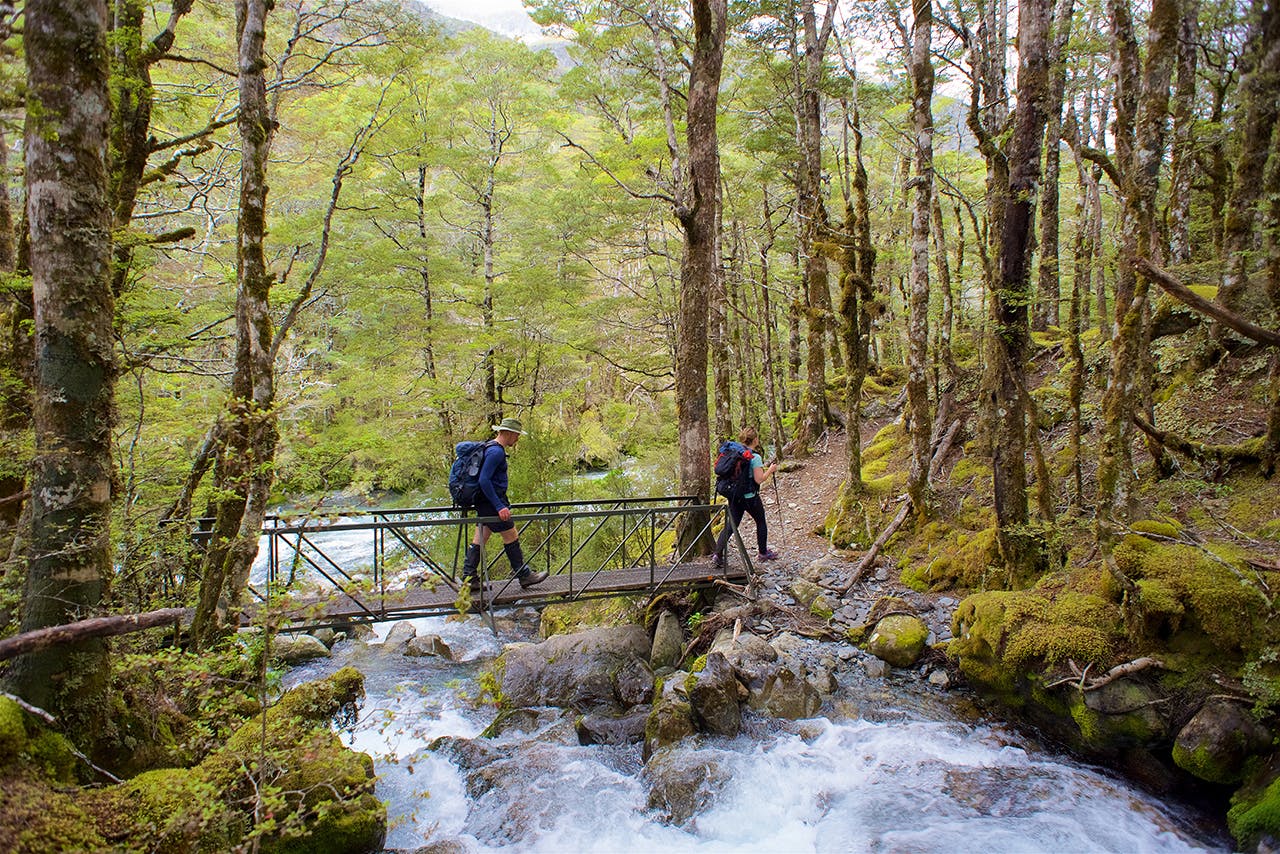
The gorgeous Travers-Sabine route is a drawcard for many trampers. Photo: Andrew Macdonald
The boat unloaded at the dock and Prehn set off up the valley. A couple of hours from the start, he met up with another tramper, and they walked together until they reached the turnoff for Hopeless Hut. Prehn, eager to explore, took the side route while she headed on to John Tait Hut, and the pair met up again that evening when Prehn arrived after sunset. ‘Beautiful, clear sky… Milky Way! Yeah!’ he wrote in the hut book, along with his intentions – ‘Travers-Sabine Circuit, maybe via Moss Pass/D’Urville Valley, otherwise usual route’.
The next morning was fine again, and he continued up the valley beside the ice-blue Travers River. He made it to Upper Travers Hut after sunset, having detoured to Cupola Hut and back. He and other trampers in the hut spoke briefly, and Prehn said he was thinking of hiking to the Travers or to Blue Lake Hut, over Moss Pass, and back along D’Urville Valley, which he wrote in the hut book. He was due out on March 1. The weather, he said, was ‘fabulous’, and he added ‘Nice hut, nice walk, nice weather – everything’s just perfect!’.
The next day, he set off towards Travers Saddle, a steep, long climb layered in shifting rock. At about 11.30am, two other trampers encountered him about half an hour below the saddle. Prehn was standing and looking up at the black peak of Mt Travers, and the three of them discussed climbing the mountain. It would be easier, one of them said, if you left your pack at the bottom and then returned to it afterward.
They were the last known people to see him. At the saddle, a flat stony space with several small tarns, Prehn dumped his pack and, presumably, walked off. No one has seen him since. But it would be three more days until anyone noticed he was missing.
Mt Travers is 2338m, the second-highest peak in Nelson Lakes National Park. Cloud smokes around its tops and sometimes fills the valley floor below. Its steep, sharp peak regularly loses its fractured rock, sending it tumbling through the shafts and valleys, breaking off in chunks as small as marbles to car- or house-sized slabs. Nearby, a rushing stream flows down the side of the mountain, the beginning of the watercourse that feeds into the Travers, then into Lake Rotoiti, and after about two days, down the Buller and finally out into the Tasman Sea.
On March 1, a couple tramping the circuit saw a grey Lowe Alpine pack on Travers Saddle and notified DOC staff, who alerted police. Snow had fallen in the area that day, and more was forecast for later in the week. There had been no reports of anyone overdue, but a rubber ice hockey tag for Prehn’s local team, Krefeld Pinguine, dangled from the pack.
The hunt began the next day. Prehn’s cell phone and passport were among some items missing from the pack, but his phone hadn’t been used, and neither had his credit card. Three ground teams, including a search dog, combed the saddle, with a helicopter flying over the area and scouring additional places nearby. Two teams stayed overnight.
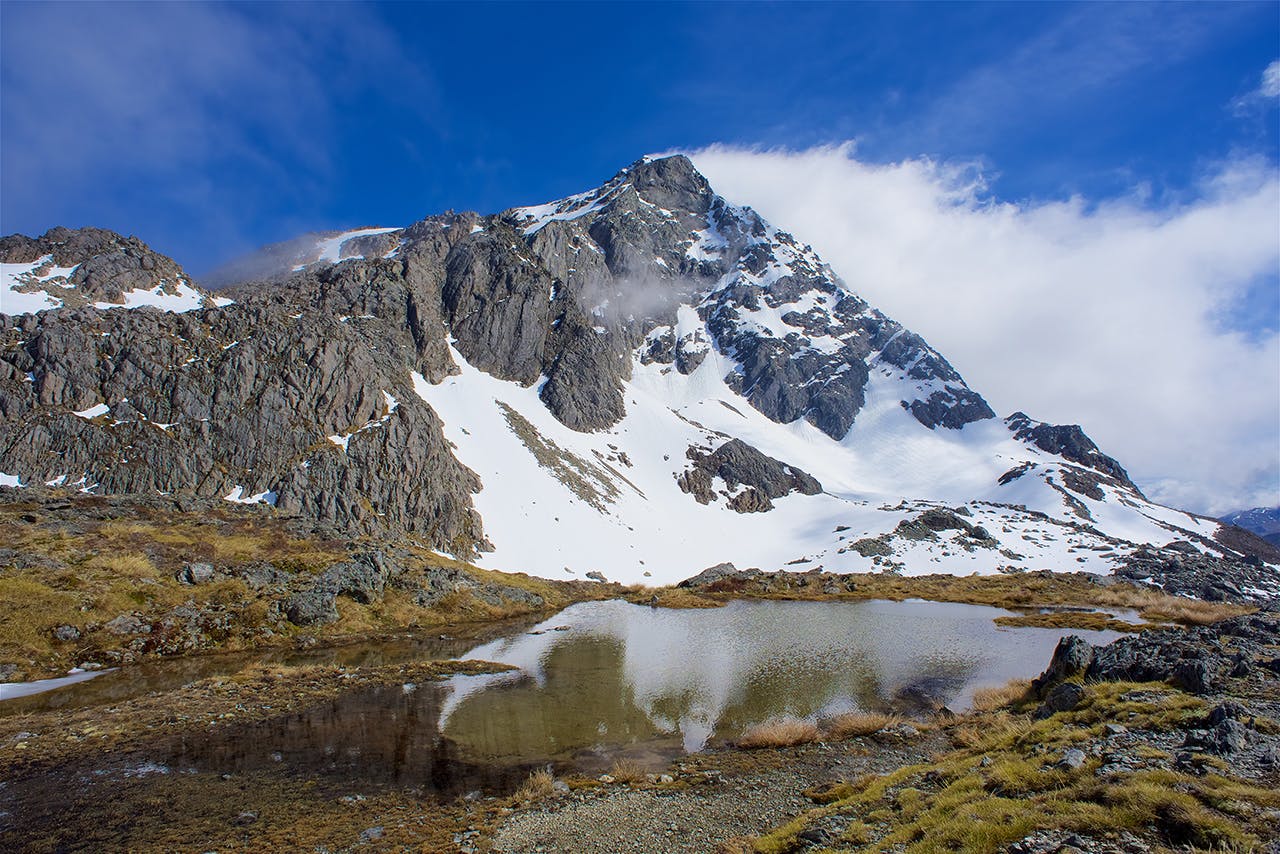
Christian left his pack at Travers Saddle, presumably to climb Mt Travers. Photo: Andrew Macdonald
But the next day brought bad weather, with up to 8cm of snow forecast and a windchill factor of -10. It was Thursday, March 6 when it was safe enough for the teams to return – 10 days since Prehn left Upper Travers Hut. Three search teams were flown into the Travers Saddle area, equipped for an overnight if needed. A helicopter searched again. But there was no trace of him.
“Learning that Christian was assumed missing was a big shock for all of us,” Jens Prehn says. Weiland says his first reaction was also disbelief, though he and Christian’s friends retained hope that they’d find him. “But with every additional day with no sign of life, I came to the realisation that we wouldn’t find Christian alive. Or maybe even find his body at all,” he says. “The helplessness of sitting on this side of the globe while your friend is missing was really crushing.”
A music school concert raised €5400 (NZD$8640 at the time), enough for a new two-day search a year later, with 15 people covering new ground as well as old.
But that too was unsuccessful.
It’s unusual to find nothing, says senior constable David Colville, who was second in charge of the Nelson Bays Search and Rescue Team.
“One of our members still goes in there pretty regularly, and a guy from North Canterbury LandSAR has spent some personal time up there searching – and he’s stumped by it all. I think everybody is,” Colville says.
”He must be in there somewhere. It was a small area and very concentrated. Personally, I still think he’d gone off to take a photo and tripped and fallen, and is in an area that can’t be seen where he couldn’t call for help – and that he passed away very quickly.”
It’s also strange that absolutely nothing has been found – not a footprint or food wrapper.
“It’s not often that trampers leave their pack; if you’re planning on walking too far, you take your pack with you.”
However, former LandSAR member Russell Ferans, who was on the original search team, voices concerns with the search, saying that there was trouble with communications and the actual number of man hours on the ground weren’t enough.
He was so aggrieved that he left SAR because of the Prehn operation, ending a 20-year search career. He says fewer resources are devoted to search and rescue these days than in the past.
“Realistically they’re only getting three or four days at the outside and then it’s scaled back down again; the reality is that in this type of country we’re talking about, that’s not enough.
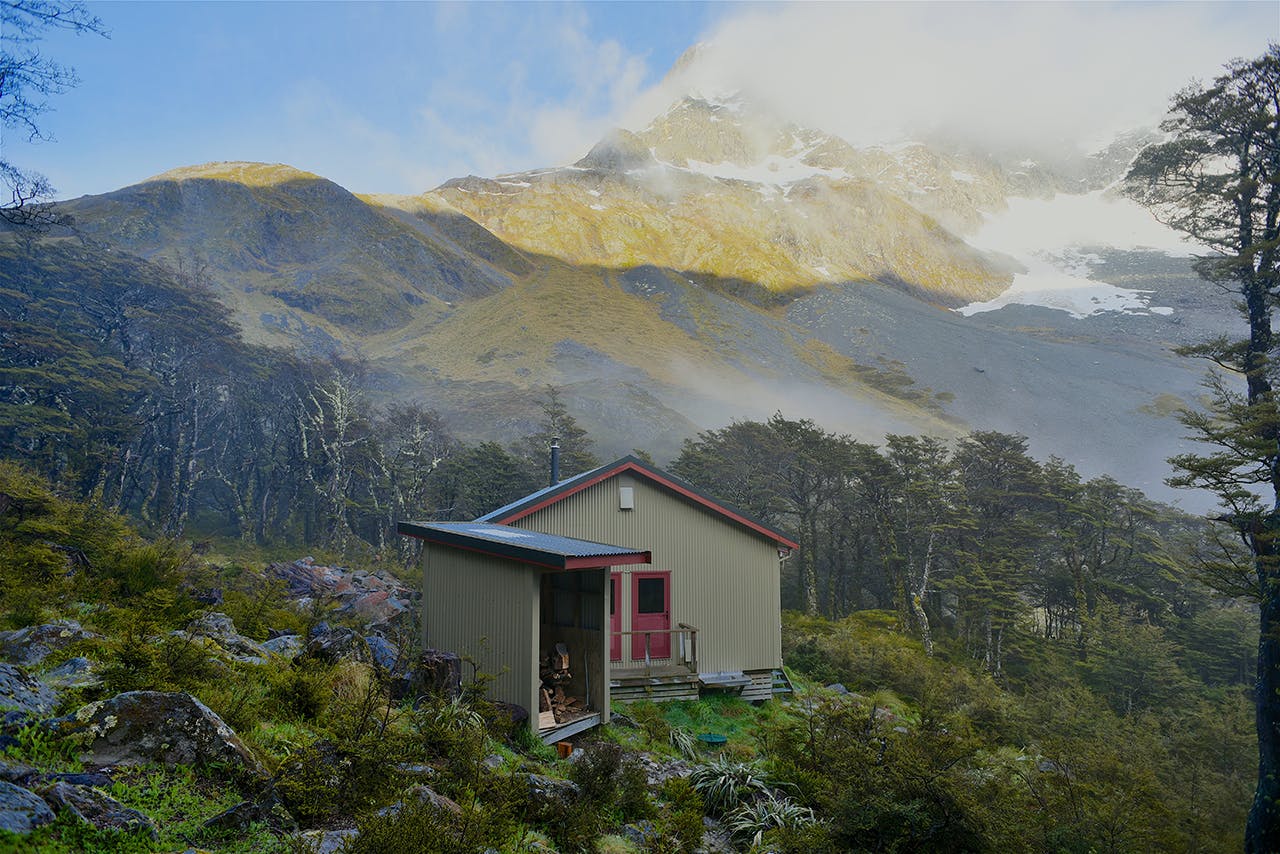
Upper Travers Hut, where Christian spent his last night before climbing to Travers Saddle – and disappearing. Photo: Andrew Macdonald
“The actual man hours spent on the side of a hill with police and volunteers are just not there; much of them will be sitting in a helicopter looking out the window which is just not going to cut the mustard. I’ve heard police saying numerous times we need to watch the dollar.”
Colville says there were indeed troubles with communications, and that the area is notorious for it.
“We know that, and DOC are well aware of that; we were using their radio channels. We put in two repeaters and even those repeaters did not help. That’s just the nature of the beast. It’s the furthest away from anywhere in the Nelson area and you’ve got tall mountains, valleys; everything that makes radio transmission bad, it’s there in that area.”
As far as the number of man hours, Colville says a lot of the area couldn’t be searched on foot due to the difficult terrain. “The places that were able to be safely searched were searched. Dangerous places were flown over…. it’s far better and safer to have stuff done by helo then having people dangling off ropes.”
To the criticisms that more man hours were spent searching in the past, he says that nowadays there is better access to air support, and the greater use of helicopters means that teams are being flown in, instead of walking in.
“I remember going on searches when I started in SAR and it took 3-4 days to get in there. Now you can fly a team most places in the Nelson area and be in there and on the ground searching much sooner.
“This was a confined area and the scenarios we came up with were able to be done within a reasonable time frame. Nothing was cut short; everything was done to how the incident management team wanted it done. The search of the saddle area took one team six hours – that’s how thoroughly that area was searched.
“I’m not going to say money isn’t an issue; definitely money is an issue, we still have to clear that with the boss. But if we don’t find anyone, we have to go to the coroner’s court, and we have to explain to the coroner why we haven’t found this person. Any of the searches in which I’m incident controller, I will not be saying we didn’t have the money to enable us to do that. I’m the one who has to explain it to the coroner and if he thinks there’s a failing it’s my name coming up in the press. Money should be argued afterwards not before, but you’ve got to balance it,” Colville says.
The coroner ruling on Prehn’s death says he was satisfied the searches were extensive, and conducted in areas of difficult terrain – and Jens Prehn doesn’t fault the operation himself.
In February 2015, just before the second search that donations funded, the family travelled to New Zealand to lay a plaque in Prehn’s memory at St Arnaud. They flew to Travers Saddle and found exactly the same weather conditions as when Christian disappeared. It was a warm, sunny day with only a light breeze, perfect visibility and a clear blue sky.
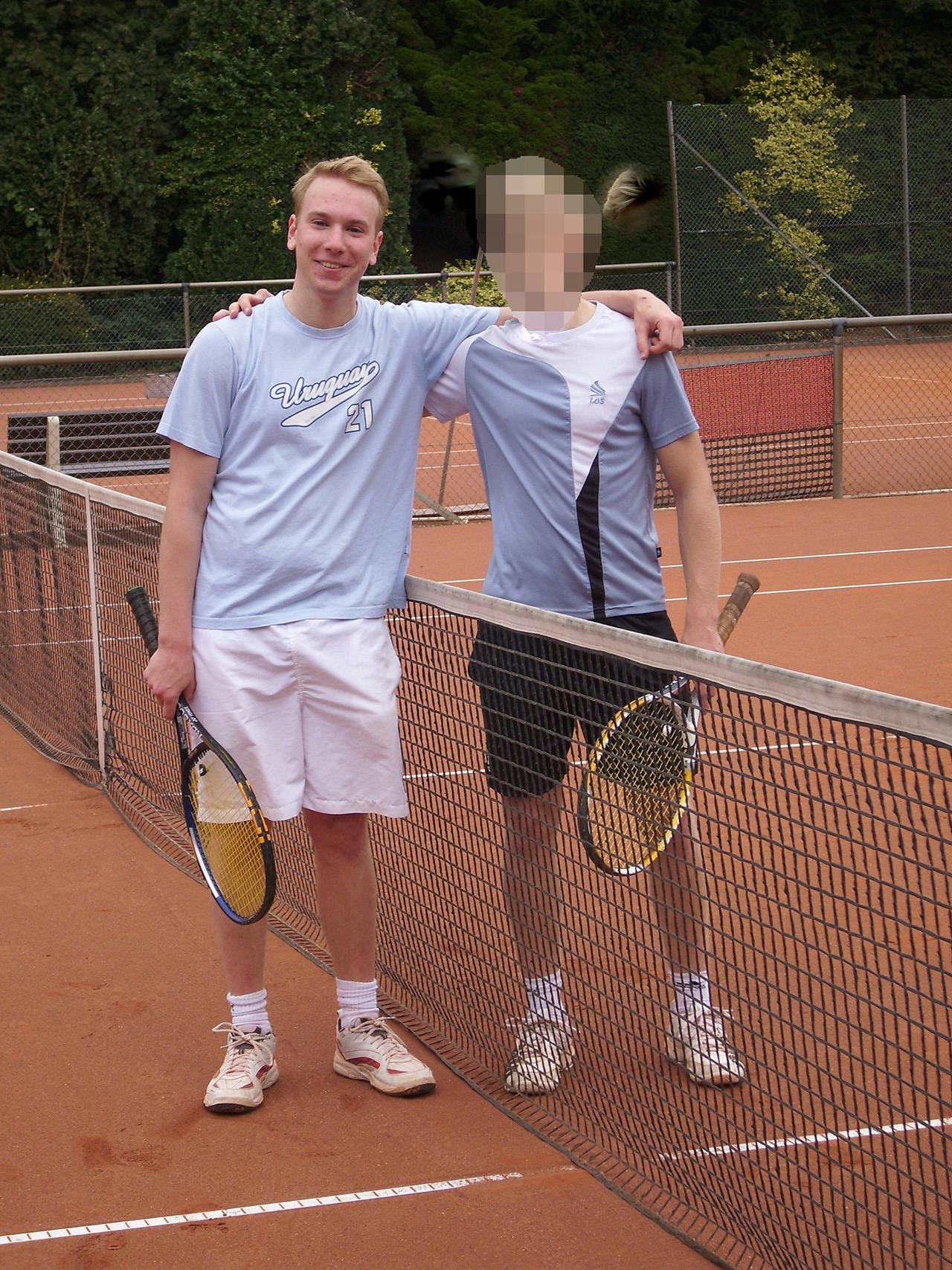
Christian’s parents say he was one of the happiest guys in the world. Photo: Supplied
“It seemed so quiet and peaceful,” Jens Prehn says. “We certainly could imagine how Christian was caught by the beauty of the area and the spirit of this scenery.”
At first sight it didn’t look too dangerous, and the family couldn’t imagine how someone could get lost up there. “But at the second look we noticed the tricky ground, with loose rubble and slippery grass – sure to be treacherous.”
Their return to Germany brought uncertainty and despair. There was the slim, wistful hope that Christian might have found a new life somewhere, and might still be alive. Police and the coroner have ruled out this remote possibility, along with suicide, mental illness, and criminal activity. Jens Prehn accepts that. But without certainty, how can you ever truly know?
On September 1, 2015, Christian would have turned 21. His friends and family gathered at the music school that was Christian’s second home, and beside a tree laid a stone with a plaque and a photo of Christian, with his red beard. It was a way for the family to cope with their grief, Jens Prehn says, as well as a worthy conclusion of the search efforts.
“It’s really sad we don’t have a conclusion,” Weiland says. “From time to time I think about Christian, about what may have happened. But time heals all wounds, right? I went from disbelief, to shock, then to mourning and to acceptance.” He drinks a beer in Christian’s memory every year.
Jens Prehn says the family has moved closer together after the tragedy.
“We learned that we had to go on in our life, and that we must value every day of our life much more, since it could end so abruptly.”
His son, he says, would not want them to grieve for the rest of their lives.
“And until this mysterious accident, Christian had so many beautiful and joyful experiences. He certainly was one of the happiest guys in the world.”





